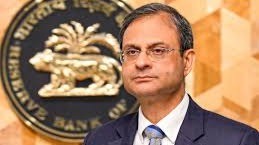Sanjay Malhotra, governor, Reserve Bank of India
The central bank raised its GDP growth forecast for the current year to 6.8% compared with its previous estimate of 6.5%
It expects inflation in the current financial year to come in at 2.6%, lower than its previous estimate of 3.1%
MUMBAI: The Reserve Bank of India (RBI) kept its key repo rate unchanged at 5.50% on Wednesday, in line with market expectations, as it evaluates the impact of earlier rate cuts and recent tax reductions amid global trade uncertainties.
The central bank raised its GDP growth forecast for the current year to 6.8% compared with its previous estimate of 6.5%.
The RBI expects inflation in the current financial year to come in at 2.6%, lower than its previous estimate of 3.1%.
The central bank had cut the repo rate by a total of 100 basis points in the first half of 2025, but paused at its previous meeting in August.
The six-member rate-setting panel voted unanimously to keep the key repo rate at 5.50% and decided to continue with a “neutral” policy stance.
Sanjay Malhotra, governor, RBI, said in a video address,“ Since the August policy meeting, significant developments on the domestic front amidst a fast-changing global economic landscape have altered the narrative on growth-inflation dynamics in India.”
Buoyed by a good monsoon, the Indian economy continues to exhibit strength by registering a higher growth in Q1:2025-26. At the same time, there has been a considerable moderation in headline inflation. The rationalisation of the goods and services tax (GST) rates is likely to have a sobering impact on inflation while stimulating consumption and growth. Tariffs on the other hand will moderate exports, said Malhotra.
The Monetary Policy Committee (MPC) also noted that growth outlook remains resilient supported by domestic drivers, despite weak external demand. It is likely to get further support from a favourable monsoon, lower inflation, monetary easing and the salubrious impact of recent GST reforms.
“However, growth continues to be below our aspirations. Even though the growth projection for the current financial year is being revised upwards, the forward-looking projections for Q3 and beyond are expected to be slightly lower than projected earlier, primarily due to trade related headwinds, despite being partially offset by the impetus provided by the rationalisation of GST rates,” said MPC.
A Reuters poll had predicted rates would remain on hold, although some economists highlighted subdued inflation and risks to growth as reasons for a potential cut.
India’s benchmark 10-year bond yield was 2 bps higher at 6.6038%, while the rupee was marginally firmer at 88.75 and equity indexes were slightly stronger.
WAIT AND WATCH
The rate panel considered it prudent to wait for the impact of several policy changes to play out before charting the next course of action.
Past rate cuts and recently announced tax cuts on consumer items will have a positive impact on demand while punitive trade tariffs imposed by the U.S. on India will hurt exports.
The Indian economy grew at a stronger-than-expected 7.8% in the April-June quarter from a year earlier.
India’s annual inflation accelerated to 2.07% in August as food prices inched higher, but remained close to the lower end of the central bank’s 2%-6% tolerance band, leaving room for rate cuts.
Churchil Bhatt, executive vice president, Investment, Kotak Mahindra Life Insurance Company, said, the MPC today delivered a dovish pause in policy rates, acknowledging fast changing growth-inflation dynamics. Average inflation for FY26 was revised lower to 2.6% from an already low level of 3.1%. While full year GDP has been revised up by 30 bps, the forward-looking projections for Q3 and beyond are expected to be slightly lower than projected earlier. This, according to the MPC, has opened up some space for monetary easing, as they await the impact of their past actions to play out.
“We expect this rhetoric to be perceived as relatively dovish compared to the MPC’s earlier messaging, thereby capping any rise in government bond yields. Market will keenly track incoming economic data to evaluate future trajectory of policy rates. We assign high probability to one more rate cut in this easing cycle going forward,” he added.
Poonam Tandon, chief investment officer, IndiaFirst Life, commented, the governor stated that despite the deterioration in the external environment, the Indian economy is expected to register higher growth. HE concluded that recent macro conditions have opened policy space for supporting growth, however, it will be prudent to wait until clarity on the impact of recent policy actions emerges. Overall, the policy decision seemed like a dovish pause, with an emphasis on data dependence.
Archit Shah, chief investment officer, Zurich Kotak General Insurance said,“ RBI is signaling that it believes the monetary easing already done needs time to fully work through. The upward growth revision gives room to pause, while the benign inflation projection justifies holding rates. But this stance is conditional upon any resurgence in global commodity prices, fiscal slippage, or exchange rate stress could force the RBI’s hand”.

